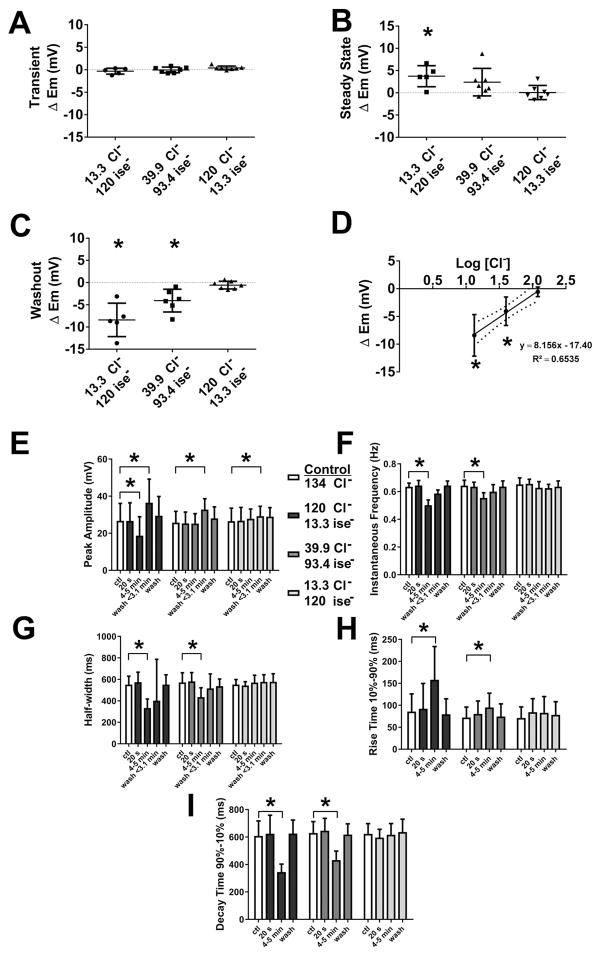Fig. 4.
Measurement of electrical slow wave properties upon replacing extracellular chloride, [Cl−]o with isethionate. A–H, Summarized data from N=5–7 experiments illustrating the effects of reduced [Cl−]o on electrical properties: Replacement of [Cl−]o with isethionate had no transient effects in membrane potential, Em (A, ΔEm). At steady state (after 4–5 min of perfusion), a concentration-dependent depolarization in Em was observed (B, ΔEm). Upon returning to normal Krebs solution, a transient, concentration-dependent hyperpolarization in Em (C, ΔEm) was observed. (D) shows the concentration dependence on a logarithmic scale. Slow waves that remained at steady state (after 4–5 min of perfusion) were analyzed, concentration-dependent reduction in slow wave amplitude (E); decreases in the instantaneous frequency (F); shortening of slow wave width (G, half-width); slower rise times at 10%–90% of peak amplitude (H); and reduction in the decay times at 90%–10% of peak amplitude (I) were seen (see text for details). These effects were reversible on washout. Values are mean ± STDEV (N=5–7, *P < 0.05, ANOVA with Bonferroni’s correction for multiple comparisons).

